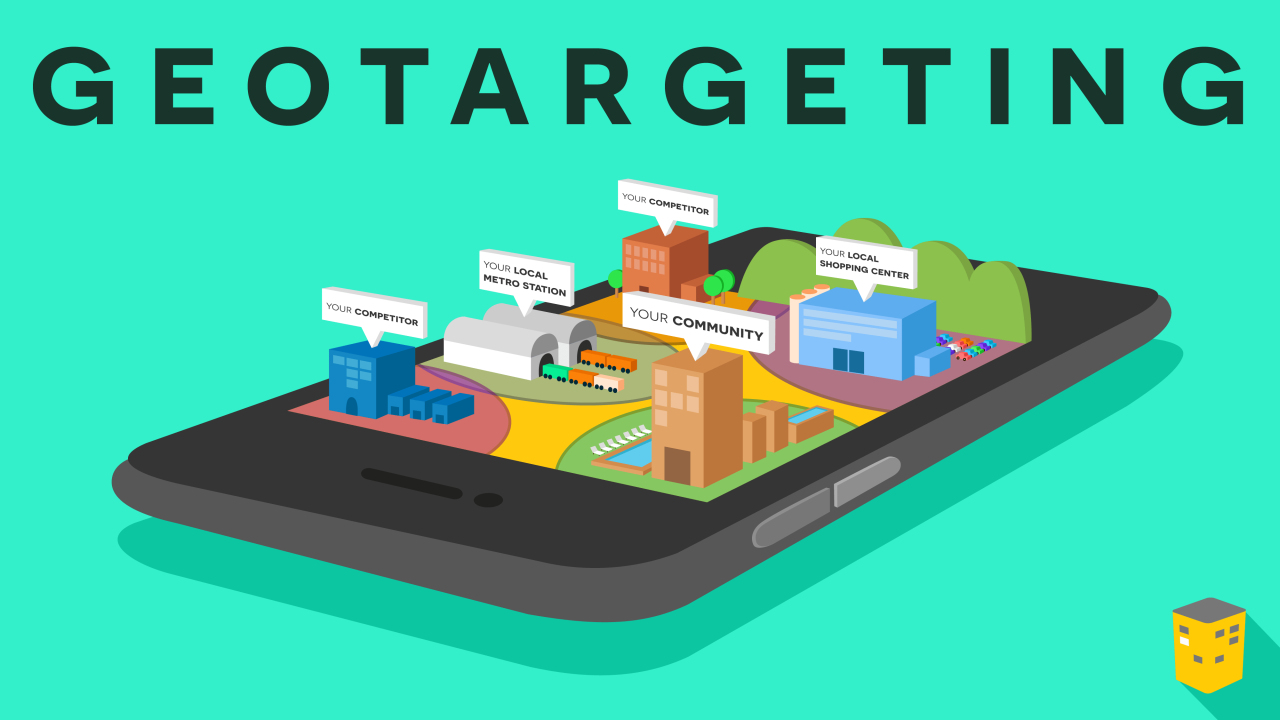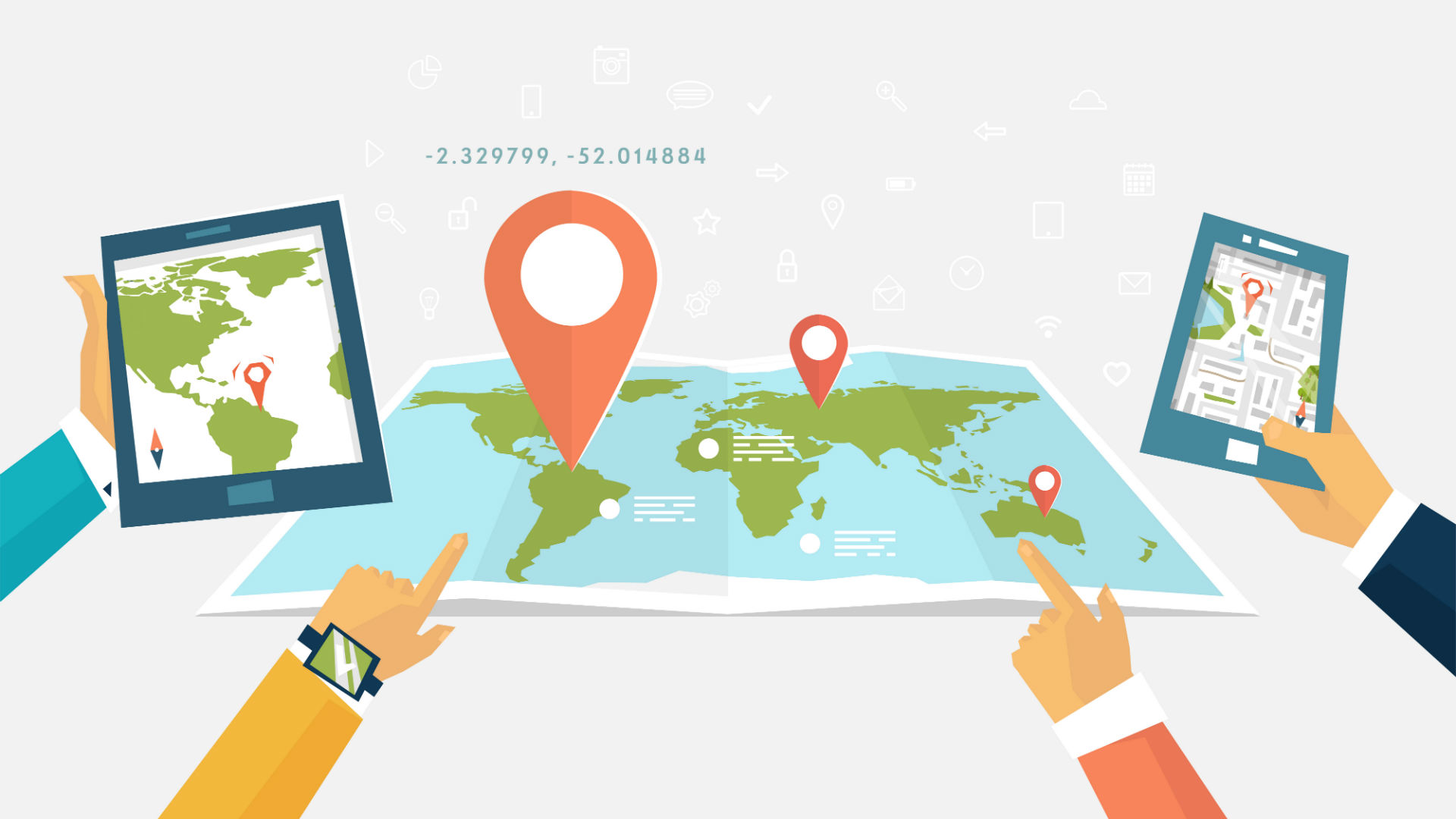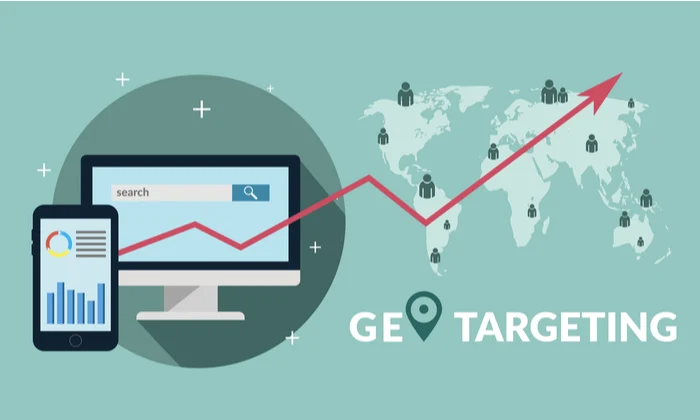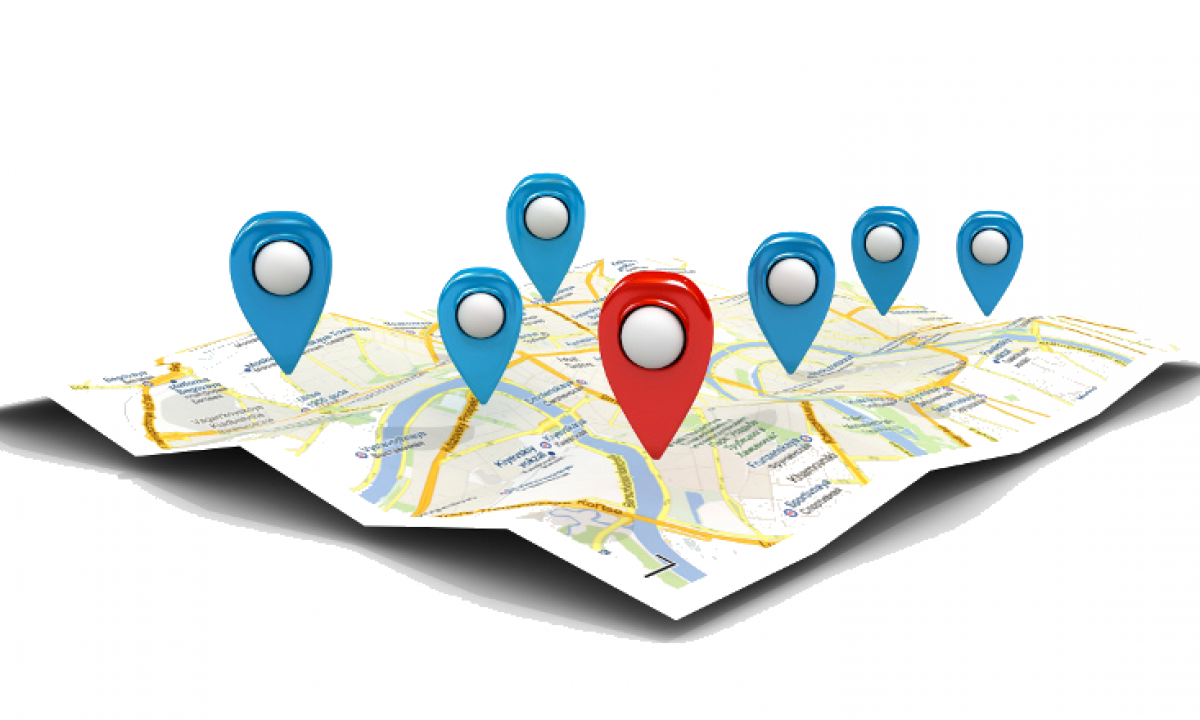
Cultivating Engagement: How AI Marketing Elevates Interactive Ads
September 18, 2025
The Art and Science of B2B Lead Generation: Your Roadmap to Growth
September 18, 2025In today’s digital age, where information travels at the speed of light, businesses constantly seek innovative ways to reach their target audience. One such innovation is using geo-targeting and location data in AI marketing strategies. Harnessing the power of artificial intelligence to tailor marketing efforts based on a user’s location has become a game-changer in the marketing landscape. This comprehensive blog post will explore the ins and outs of mastering geo-targeting and location data to gain a competitive advantage in the marketing world.

Understanding Geo-targeting
The What and Why of Geo-targeting
Geo-targeting, also known as location-based marketing, delivers tailored content or advertisements to users based on their geographical location. It’s like sending the right message to the right people in the right place. This strategy is underpinned by the belief that a message is most effective when relevant to the recipient’s surroundings.
Why should you care about geo-targeting? Well, consider this: If you run a surf shop in Miami Beach, targeting potential customers in Alaska with ads for surfboards is unlikely to yield impressive results. Geo-targeting ensures that your marketing efforts are cost-effective and highly relevant, increasing the likelihood of conversions.
Benefits of Geo-targeting
Let’s break down the advantages of embracing geo-targeting in your marketing arsenal:
- Improved Relevance: Tailoring your content to a user’s location increases its relevance, making it more likely to resonate with the audience.
- Enhanced Engagement: Users who see content that speaks to their immediate surroundings are likelier to engage with it.
- Cost Efficiency: By focusing your marketing budget on specific geographic areas, you can maximize your ROI and minimize wasted ad spend.
- Better Insights: Geo-targeting provides valuable data on customer behaviour and preferences in different locations, enabling data-driven decision-making.
Geo-targeting in Different Industries
Geo-targeting isn’t limited to a particular industry; it can be applied across various sectors to achieve specific marketing goals:
- Retail: Retailers can use geo-targeting to promote in-store offers to nearby customers and drive foot traffic.
- Restaurants: Local restaurants can send targeted promotions during lunch and dinner hours to attract nearby diners.
- Travel: The travel industry can offer personalized travel deals based on a user’s location.
- Real Estate: Real estate agents can use geo-targeting to showcase properties in a user’s desired neighbourhood.
Geo-targeting has proven its versatility, making it valuable in the marketer’s toolbox.
Real-life Examples of Geo-targeting Success
Let’s take a look at some real-world examples of companies that have nailed geo-targeting:
Example 1: Starbucks
Starbucks leveraged geo-targeting to promote its seasonal offerings. Customers who were near a Starbucks location received push notifications with special offers. This strategy led to a significant increase in foot traffic and sales.
Example 2: Pokémon GO
The popular mobile game Pokémon GO uses augmented reality and location-based data to encourage players to explore their surroundings. It turned ordinary streets and parks into virtual playgrounds, leading to a surge in player engagement and in-app purchases.
Example 3: Airbnb
Airbnb uses geo-targeting to display listings relevant to a user’s current location. This ensures that users see available accommodations nearby, making booking more convenient and efficient.
Geo-targeting is not just a buzzword; it’s a proven strategy that can elevate your marketing game. Now, let’s delve deeper into the role of location data in making geo-targeting possible.

The Role of Location Data
Collecting Location Data
To implement effective geo-targeting, you need access to accurate location data. This data can be gathered through various sources, including:
- GPS and Location Services: Many mobile apps and devices have built-in GPS functionality, precisely pinpointing the user’s location.
- IP Address Tracking: Websites can determine a user’s approximate location by analyzing their IP address.
- Mobile Network Data: Mobile carriers can provide location data based on the cell towers to which a user’s device is connected.
- User Input: Users may voluntarily provide their location information through app sign-up forms or preferences settings.
Collecting location data is the foundation upon which geo-targeting is built. The more accurate and diverse your data sources, the more effectively you can target your audience.
Privacy Concerns and Ethical Considerations
While location data is a valuable asset, it comes with significant responsibilities. Users are increasingly concerned about their privacy, and the misuse of location data can lead to trust erosion and legal consequences. It’s crucial to:
- Obtain Consent: Always seek explicit consent from users before collecting their location data. Inform them about how the data will be used.
- Anonymize Data: Whenever possible, anonymize location data to protect user identities.
- Comply with Regulations: Familiarize yourself with data protection laws in your region and adhere to them strictly.
Location Data Security Measures
To maintain the security of location data, consider implementing the following measures:
- Encryption: Ensure location data is encrypted in transit and at rest to prevent unauthorized access.
- Access Controls: Limit access to location data to authorized personnel only and regularly audit access logs.
- Data Retention Policies: Establish clear policies regarding the retention and deletion of location data to minimize the risk of data breaches.
By addressing privacy concerns and implementing robust security measures, you can build trust with your audience and safeguard their sensitive location information.
Utilizing Location Data for Personalization
Location data is the cornerstone of geo-targeting, but its applications go beyond mere targeting. Here’s how you can leverage location data for personalization:
- Local Recommendations: Recommend nearby stores, restaurants, or services based on the user’s location.
- Weather-based Content: Adjust your content to reflect the local weather. For instance, promote raincoats during rainy days.
- Event-based Marketing: Capitalize on local events and holidays to tailor your promotions and content.
Location-based personalization enhances the user experience and increases the chances of conversion. It demonstrates that you understand your audience’s immediate needs and preferences.
Location data is a powerful asset, but it’s most effective when combined with the capabilities of artificial intelligence. In the next section, we’ll explore how AI supercharges geo-targeting strategies.

AI-Powered Geo-targeting Strategies
Machine Learning Algorithms in Geo-targeting
Artificial intelligence, particularly machine learning, has revolutionized how businesses approach geo-targeting. Machine learning algorithms analyze vast datasets to identify patterns and trends, allowing for more accurate and dynamic targeting. Some key ways AI enhances geo-targeting include:
- Predictive Analytics: AI can predict user behaviour based on historical data, enabling proactive targeting.
- Segmentation: AI can create highly specific audience segments for precise targeting.
- Dynamic Optimization: AI can continuously adjust targeting parameters for optimal results.
- A/B Testing: AI can automate A/B testing to determine which geo-targeting strategies yield the best results.
AI-powered geo-targeting goes beyond static demographic data; it adapts to real-time user behaviour and preferences, making it a potent tool for marketers.
Dynamic Content Generation
One of the challenges in geo-targeting is creating content that resonates with diverse audiences. AI can generate dynamic content that adapts to the user’s location, preferences, and behaviour. Here’s how dynamic content generation works:
- Content Personalization: AI can customize product recommendations, ad copy, and images based on the user’s location.
- Language Localization: AI can translate and adapt content to the user’s preferred language and dialect.
- Real-time Updates: AI can update content in real-time to reflect changing conditions, such as local weather or traffic.
- Personalized Landing Pages: AI can create landing pages tailored to users’ location and interests.
Dynamic content generation ensures that your marketing messages are always relevant and engaging, regardless of where your audience is located.
Cross-channel Integration
Effective geo-targeting extends across multiple marketing channels, from social media and email to mobile apps and websites. AI can help integrate geo-targeting seamlessly into your multichannel marketing strategy. Here’s how:
- Consistent Messaging: AI ensures that your messaging is consistent and aligned across all channels, reinforcing your brand identity.
- Automated Campaign Management: AI can automate campaign management, ensuring that geo-targeted content is delivered at the right time on the proper channels.
- Data Synchronization: AI synchronizes data across channels, ensuring user preferences and behaviour are consistently reflected in your marketing efforts.
- Feedback Loop: AI can analyze user responses across channels, providing insights to optimize future geo-targeting efforts.
Cross-channel integration enhances the user experience and maximizes the impact of your geo-targeting campaigns.
The Role of Big Data in AI-Powered Geo-targeting
To fuel AI-powered geo-targeting, you need access to vast amounts of data. Big data analytics plays a pivotal role in this process. Here’s how big data contributes:
- Data Aggregation: Big data systems aggregate data from multiple sources, including location data, user profiles, and historical behaviour.
- Real-time Processing: Big data platforms process data in real-time, allowing for instant adjustments to geo-targeting strategies.
- Pattern Recognition: Big data analytics identifies complex patterns and correlations within the data, enabling more accurate targeting.
- Scalability: Big data systems can handle the immense data generated by large-scale geo-targeting campaigns.
By harnessing big data and AI together, marketers can unlock the full potential of geo-targeting, delivering personalized and timely messages to their audience.

Case Studies: Geo-targeting Success Stories
McDonald’s: The Art of Localized Advertising
McDonald’s, the global fast-food giant, has mastered the art of localized advertising through geo-targeting. They use data from their mobile app to identify users’ locations and preferences. Here’s how they do it:
- Geo-fencing: McDonald’s sets up virtual “geo-fences” around their restaurant locations. Users who enter this area receive special offers and promotions on their mobile app.
- Localized Menus: In some regions, McDonald’s offers location-specific menu items based on local tastes and preferences. For example, you might find unique articles in a McDonald’s in Japan that you won’t see in a McDonald’s in the United States.
- Geo-targeted Timing: McDonald’s sends out promotions at specific times of the day, such as breakfast deals in the morning and late-night specials after dark. This timing aligns with users’ likely meal preferences.
The result? Increased foot traffic, higher app engagement, and a boost in sales. McDonald’s demonstrates how geo-targeting can be a game-changer in the highly competitive fast-food industry.
Uber: A Lesson in Precision Targeting
Uber, the ride-sharing giant, relies heavily on geo-targeting to match drivers and riders efficiently. Their algorithms consider the user’s location and other factors like traffic, weather, and demand patterns. Here’s how they make it work:
- Real-time Matching: Uber’s algorithms use real-time location data to match riders with the nearest available drivers.
- Dynamic Pricing: Uber adjusts prices based on demand and location. For example, prices may increase during peak hours or in areas with high demand to encourage more drivers to pick up passengers.
- Destination Predictions: Uber predicts users’ destinations based on their historical ride data, allowing for smoother and more efficient pickups.
By mastering geo-targeting, Uber has created a seamless and efficient ride-sharing experience, revolutionizing transportation in urban areas worldwide.
Amazon Go: Revolutionizing In-Store Shopping
Amazon Go, Amazon’s cashier-less convenience stores, takes geo-targeting to a new level within physical retail spaces. Using a combination of cameras, sensors, and mobile app technology, Amazon Go has redefined the shopping experience:
- Location-based Shopping: Shoppers check in with their Amazon Go app when they enter the store. The store tracks their movements; they can grab items and leave without going through a traditional checkout process.
- Personalized Recommendations: The Amazon Go app offers customized product recommendations based on the user’s location in the store and past purchase history.
- Inventory Tracking: Geo-targeting helps Amazon keep precise track of inventory, ensuring that shelves are always stocked with fresh products.
This innovative approach to geo-targeting has disrupted the retail industry by offering a convenient and highly personalized shopping experience.
Spotify: Personalizing Music Recommendations through Geo-targeting
The popular music streaming service Spotify uses geo-targeting to personalize music recommendations for its users. Here’s how it works:
- Localized Playlists: Spotify creates playlists tailored to specific cities or regions, featuring music currently trending or popular in those areas.
- Event-based Playlists: Spotify curates playlists for events such as music festivals or holidays, allowing users to discover music relevant to their location and interests.
- Concert Alerts: Spotify notifies users of concerts and events in their area, providing a personalized concert discovery experience.
By leveraging location data and AI, Spotify enhances user engagement and keeps users coming back for more, illustrating the power of geo-targeting in the entertainment industry.
Geo-targeting isn’t just a marketing strategy; it’s a strategic approach that can transform businesses across various sectors. These case studies demonstrate the versatility and effectiveness of geo-targeting when combined with AI and location data. Now, let’s explore how you can measure the impact of your geo-targeting efforts.

Measuring the Impact of Geo-targeting
Key Performance Indicators (KPIs)
Measuring your geo-targeting campaigns’ success requires using key performance indicators (KPIs) that align with your goals. Here are some essential KPIs to consider:
- Conversion Rate: Measure how many geo-targeted users completed the desired action, such as purchasing or signing up for a newsletter.
- Click-through Rate (CTR): Track the percentage of users who clicked on your geo-targeted ads or content.
- Return on Investment (ROI): Calculate the return on investment specifically for your geo-targeting campaigns to assess their cost-effectiveness.
- Foot Traffic: For brick-and-mortar businesses, tracking foot traffic to physical locations can be a crucial KPI. Geo-targeted promotions can directly impact in-store visits.
- Engagement Metrics: Monitor metrics such as time spent on site, bounce rate, and social shares to gauge user engagement with geo-targeted content.
- Customer Lifetime Value (CLV): Analyze how geo-targeting affects the long-term value of customers acquired through targeted campaigns.
These KPIs provide insights into the effectiveness of your geo-targeting efforts, helping you fine-tune your strategies for optimal results.
Tracking and Analytics Tools
To measure KPIs accurately, you’ll need robust tracking and analytics tools. Here are some tools commonly used in geo-targeting measurement:
- Google Analytics: Provides detailed insights into website traffic, including geographic data and user behaviour.
- AdWords Location Extensions: For advertisers, this tool helps track the performance of geo-targeted ads.
- Heatmaps: Tools like Crazy Egg or Hotjar offer heatmaps that visualize user interactions on your website, including where users are clicking and how far they scroll.
- Geo-fencing Analytics: If you use geo-fencing, analytics platforms associated with your software can provide valuable data on user interactions within your defined areas.
- Social Media Insights: Social media platforms offer insights into the performance of geo-targeted social media campaigns.
- Customer Relationship Management (CRM) Systems: CRM systems can track customers’ location data and their interactions with your business.
By leveraging these tools, you can collect and analyze data to assess the impact of your geo-targeting campaigns and make data-driven decisions.
Continuous Optimization
Geo-targeting is not a one-time effort; it requires continuous optimization to maximize its effectiveness. Here’s how you can continually refine your geo-targeting strategies:
- A/B Testing: Experiment with geo-targeting parameters like location radius or messaging to identify what works best for your audience.
- Data Analysis: Regularly analyze the data from your geo-targeting campaigns to identify trends and patterns that can inform future efforts.
- User Feedback: Collect feedback from users regarding their geo-targeted experiences to make improvements.
- Stay Updated: Keep up with changes in user behaviour, technology, and regulations that may impact your geo-targeting efforts.
Continuous optimization ensures that your geo-targeting strategies remain relevant and effective over time, adapting to your audience’s evolving needs and preferences.
Geo-targeting has the potential to impact your marketing ROI significantly, but it’s essential to address the challenges and pitfalls associated with this strategy.
.jpeg)
Addressing Challenges and Pitfalls
Data Accuracy and Quality
The success of geo-targeting hinges on the accuracy and quality of location data. Here are common challenges and solutions:
Challenge: Inaccurate Data – Location data may only sometimes be precise, leading to mis-targeting.
Solution: Use multiple data sources and validation methods to improve accuracy. Consider implementing GPS-based solutions for high-precision targeting.
Challenge: Outdated Data – Location data can become outdated quickly, resulting in ineffective targeting.
Solution: Regularly update your location data sources and implement data-refreshing procedures to ensure relevance.
Challenge: Incomplete Data – Some users may opt out of sharing their location data, leading to gaps in your targeting efforts.
Solution: Develop strategies for incentivizing users to share their location data and provide value in return.
Adherence to Regulations
Geo-targeting is subject to various privacy regulations and laws, such as GDPR in Europe and CCPA in California. Failing to comply with these regulations can lead to severe consequences. Here’s how to navigate this challenge:
- Understand Legal Requirements: Familiarize yourself with your region’s and industry’s specific regulations. Seek legal counsel if necessary.
- Obtain Consent: Always obtain explicit consent from users before collecting and using their location data. Communicate how the data will be used.
- Data Transparency: Be transparent with users about your geo-targeting practices, including providing opt-out options.
- Data Retention: Implement data retention policies to ensure location data is stored only as long as necessary.
Overcoming Technical Hurdles
Implementing geo-targeting technology can be technically challenging, especially for small businesses with limited resources. Here are strategies to overcome technical hurdles:
- Invest in Training: Ensure your team is adequately trained using geo-targeting tools and technologies.
- Outsource Solutions: Consider outsourcing geo-targeting tasks to specialized service providers if you need more in-house expertise.
- Use User-Friendly Platforms: Choose user-friendly geo-targeting platforms that offer support and resources for implementation.
- Start Small: Begin with more straightforward geo-targeting campaigns and gradually scale up as you gain experience and resources.
By proactively addressing these challenges, you can minimize potential roadblocks and maximize geo-targeting benefits.
Consumer Trust in Geo-targeting
Building and maintaining consumer trust is paramount in geo-targeting. Here’s how to establish trust with your audience:
- Transparency: Communicate your geo-targeting practices and how user data is used.
- Security Measures: Highlight the security measures to protect user location data.
- Opt-in Options: Give users the choice to opt in or out of geo-targeted messaging.
- Value Exchange: Provide clear value to users in exchange for their location data, such as personalized discounts or recommendations.
- Feedback Mechanism: Offer users an easy way to provide feedback and report any concerns related to geo-targeting.
Earning and maintaining consumer trust in your geo-targeting efforts can lead to long-lasting customer relationships and brand loyalty.
Geo-targeting presents a world of opportunities but requires a proactive approach to address these challenges and pitfalls. By doing so, you can navigate the complexities of geo-targeting successfully.

The Future of Geo-targeting and Location Data
Emerging Technologies
The future of geo-targeting is intertwined with emerging technologies that promise to take it to new heights. Here are some technologies to watch:
- 5G Networks: The rollout of 5G networks will enable faster and more accurate location data, opening doors to real-time targeting in urban areas.
- Augmented Reality (AR) and Virtual Reality (VR): AR and VR technologies will create immersive geo-targeting experiences, such as location-based augmented reality advertisements.
- Internet of Things (IoT): IoT devices, from smart speakers to connected cars, will provide a wealth of location data for geo-targeting.
- Blockchain: Blockchain technology can enhance the security and transparency of location data, addressing privacy concerns.
Personalization Beyond Geo-targeting
As technology advances, personalization will extend beyond simple geo-targeting. Here’s how:
- Contextual Personalization: AI will consider location, user behaviour, preferences, and context to deliver hyper-personalized content.
- Predictive Personalization: AI will predict user needs and preferences before they even express them, creating anticipatory experiences.
- Multi-modal Personalization: Personalization will span multiple channels, seamlessly transitioning from online to offline experiences.
- Privacy-focused Personalization: Privacy will remain a top priority, with users having more control over their data and how it’s used for personalization.
Sustainability and Responsibility in AI Marketing
With great power comes great responsibility. As AI and geo-targeting capabilities expand, ethical considerations and sustainability will become central themes:
- Ethical AI: Businesses must adhere to ethical AI practices, ensuring fairness, transparency, and accountability in their algorithms.
- Sustainable Marketing: Sustainability will influence marketing efforts, with eco-conscious consumers favouring brands that align with their values.
- Responsible Data Usage: Companies will be held to higher data collection, usage, and protection standards.
- Global Harmonization: As geo-targeting crosses borders, international data protection and marketing practices standards will continue to evolve.
The future of geo-targeting and location data holds immense promise but also demands responsible and sustainable business practices.
Geo-targeting and location data, powered by artificial intelligence, have reshaped the marketing landscape. This comprehensive guide has explored the fundamentals of geo-targeting, the pivotal role of location data, AI-powered strategies, real-life case studies, measurement techniques, challenges, and the future of this dynamic field.
As you embark on your geo-targeting journey, remember that success lies in striking the right balance between relevance and privacy, technology and ethics, personalization and responsibility. You can gain a competitive advantage in the ever-evolving marketing world by mastering geo-targeting and location data.
Now, it’s time to apply these insights to your marketing strategies and embark on your journey to mastering geo-targeting and location data.


